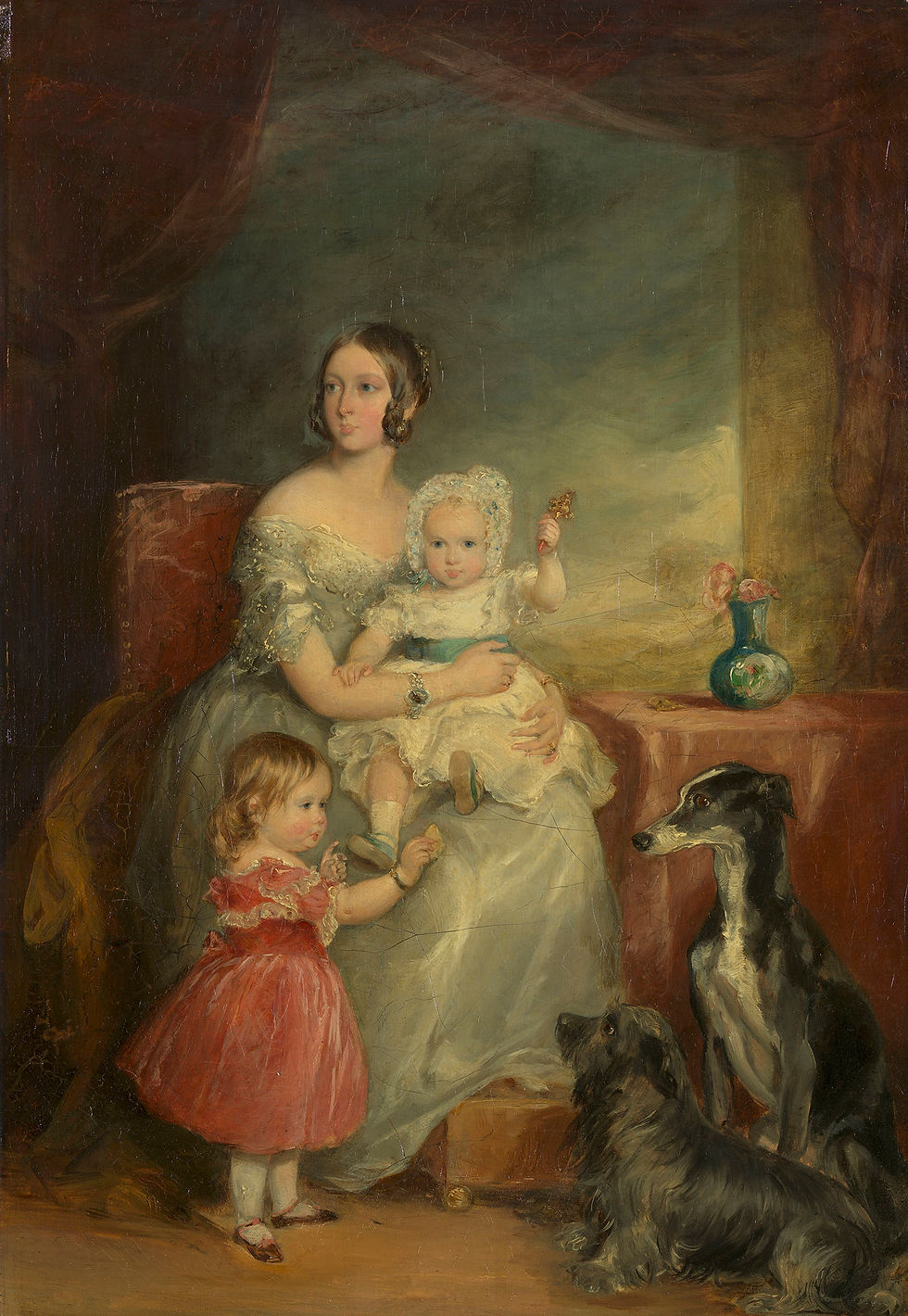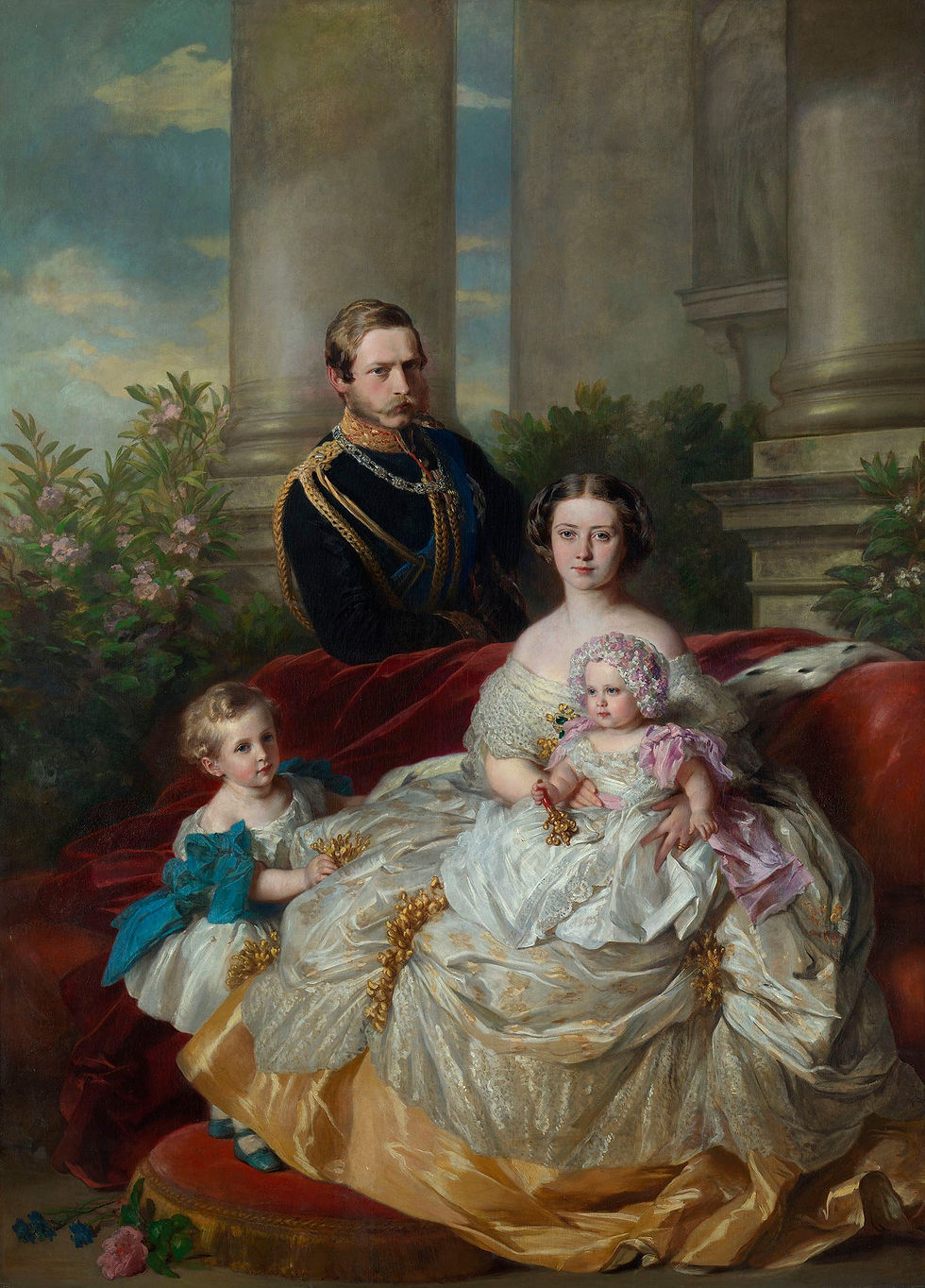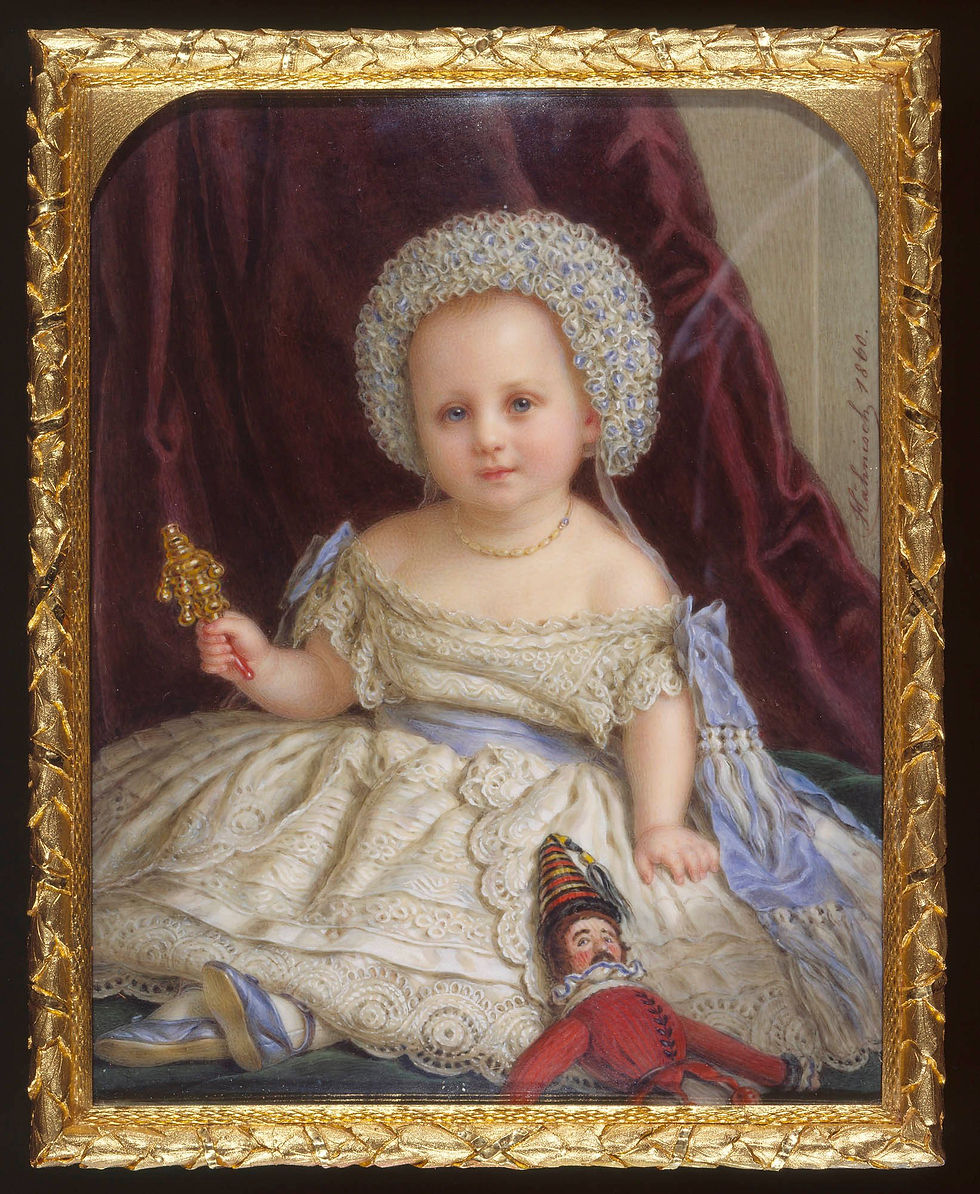Teething toy fit for a Royal
- Victoria Regina
- Aug 5, 2023
- 3 min read

Made from gold and coral, Queen Victoria’s rattle and whistle is perhaps one of the most peculiar items in the Royal Collection. The main design consists of a whistle and six bells. It is decorated by a floral band and borders of milled and herring-bone ornament. The handle is made out of naturally shaped coral, which was used to help soothe teething. This particular one was created by Alexander James Strachan While at the time this was a common toy to give to a baby, it certainly doesn’t seem safe by today’s standards! There are various examples and variations of these type of teething toy during the early Georgian and Victorian period. Coral was chosen as a suitable teething material as it could not be chewed into pieces and therefore constitute a choking hazard; it was smooth and easily wiped clean, it was also cool to the touch, giving relief to the inflamed gums of a teething toddler.

During the early 15th century it was more common to actually give a child coral beads on a string to help soothe their teething (Small beads and a small child doesn't seem like a good idea...) although by the end of the 15th century the design similar to the one used by Queen Victoria emerged. There are various examples of children holding/using teething rattles in a similar style - Here is an example from 1660

This particular rattle and whistle was used by Queen Victoria as a child which was subsequently used by her children and grandchildren. Queen Victoria mentions the rattle in her diary on the 12th February 1841 - 'Went to see our little Victoria setting to Ross, for a sketch; she was so good, looking at my old rattle, which Mrs Pegley was shaking at her.'
Here is Queen Victoria as a Princess playing with the rattle in 1819. This was the very first portrait painted of her. This portrait may have been painted for the birthday of the Princess's father, The Duke of Kent, on 2 November 1819.


The rattle has been captured in various paintings and sketches through Queen Victoria's life including artwork of her children and grandchildren using it as infants. After Victoria, the unusual contraption was used by all of Queen Victoria's nine children, as well as her grandchildren. This unusual contraption also features in several portraits throughout her reign.



Although not to be confused with the brooch copy which was given to Queen Victoria by her mother the Duchess of Kent, August 17 1840.

There are various children's rattles in The Royal Collection but ones featuring coral are the most unusual. Similar in design to Queen Victoria's, this Coral and Bells was given by Queen Charlotte Matilda, Princess Royal of England, Queen of Würtemberg, eldest daughter of George III, to her step-grand-daughter, Princess Catherine of Würtemberg; who in turn gave it to her cousin Princess Victoria Mary of Teck in 1870.




Comments